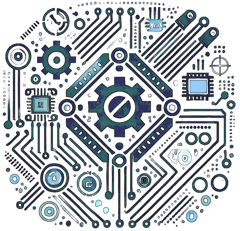Objective
The objective of this experiment is to investigate the behavior and performance of ceramic disc capacitors in radio frequency (RF) circuits, examining their effects on frequency response, signal quality, and overall circuit performance.
Materials Needed
- Ceramic disc capacitor (e.g., 10nF, 100nF)
- Inductor (e.g., 10µH)
- Resistor (e.g., 1kΩ)
- Signal generator
- Oscilloscope
- Breadboard or PCB for assembly
- Power supply (DC source)
- Multimeter
- Jumper wires
- Safety equipment (gloves, goggles, etc.)
No Ads Available.
Theory
Ceramic disc capacitors are commonly used in RF applications due to their stability, low loss, and high-frequency characteristics. They can be used for coupling, decoupling, and filtering signals in RF circuits. The impedance of a capacitor in an AC circuit is given by:
Z = 1 / (2 * π * f * C)
Where **Z** is the impedance, **f** is the frequency, and **C** is the capacitance. Understanding how ceramic capacitors interact with RF signals is essential for designing effective RF circuits.
Steps
-
Set Up the Circuit
Assemble the RF circuit on a breadboard. Connect the ceramic disc capacitor in parallel with the inductor to form a resonant LC circuit. Ensure that all components are connected securely.
-
Connect the Signal Generator
Connect the signal generator to the input of the circuit. Set the frequency range to cover the expected resonant frequency based on the component values.
-
Connect the Power Supply
Connect the power supply to the circuit, ensuring it is set to a safe voltage level (e.g., 5V to 12V).
-
Measure Output Voltage
Use the oscilloscope to measure the output voltage across the capacitor. Observe the waveform and note the amplitude and frequency response.
-
Change the Frequency
Adjust the frequency of the signal generator and observe the changes in the output voltage amplitude and waveform shape. Record the output voltage at various frequencies.
-
Analyze Results
Compare the output voltage levels and the frequency response as the frequency of the input signal changes. Analyze how the ceramic capacitor affects the circuit's performance.
Data and Calculations
Record the measured output voltages and frequencies in the table below:
| Frequency (kHz) | Output Voltage (V) |
|---|---|
| 100 | 3.0 |
| 200 | 4.5 |
| 300 | 2.5 |
Conclusion
This experiment demonstrates the use of ceramic disc capacitors in RF circuits and their significant impact on signal quality and circuit behavior. The results highlight the importance of selecting appropriate capacitors in RF applications to ensure optimal performance.


